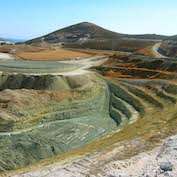Mine site villages urged to go green

Murdoch University researchers have calculated the carbon footprint of a typical WA mine site village, finding that significant improvements can be made without affecting the bottom line.
Lead researcher and PhD candidate David Goodfield conducted a detailed examination of a mining camp in WA's Mid West.
He found that the overall carbon footprint varied according to the potential life of the camp. For a camp with a lifespan of five years, it amounts to approximately 2600 tonnes CO2-e (carbon dioxide equivalent).
"That includes the carbon emissions from constructing the camp and buildings, the electricity to run the camp, deliver goods, pump water, deal with waste and so on.
"It equates to at least 16 tonnes per camp resident, which is on top of the carbon they are responsible for while at home.
"If you extrapolate that across the nation, the carbon saving is worth thinking about considering the number of fly-in fly-out workers there are to remote camps such as this one."
The study, funded by the Australian Research Council's Linkage program, found that applying energy efficiency and behaviour change measures was only likely to reduce the carbon footprint by six per cent.
Mr Goodfield found that a much greater reduction could be made by switching the village's energy supply to renewable sources.
"The camp I examined is powered by the generator at the mine itself, with an eight kilometre spur line running the electricity between the two points," he said.
"That spur line cost approximately $2 million to construct. For the same cost, they could have installed a renewable energy system which could have paid for itself in as little as three and a half years."
Mr Goodfield said any excess power could be redirected to the town's power supply, possibly offsetting costs further, while making a positive contribution to the community.
"At the end of the village's life, solar panels and wind turbines can simply be packed up for use at the next location," he said.
"Or a company could choose to leave a lasting legacy in the town by leaving the infrastructure there."
While this one particular method may not make a mine site village completely carbon neutral, with some good planning, Mr Goodfield said it can be achieved.
"These initiatives need to be implemented at the design level, which can be very cost effective," he said.
Mr Goodfield said mine site camps frequently have a short lifespan due to the volatility of the resource markets.
"This means that ways to reduce the carbon footprint are usually overlooked in the early planning and design stage," he said
"However, the continually falling price of solar and rise of gas and diesel costs means that further investigation is warranted.
"What company could argue with attractive payback periods and return on investment whilst reducing their impact on the environment?"
Provided by Murdoch University




















